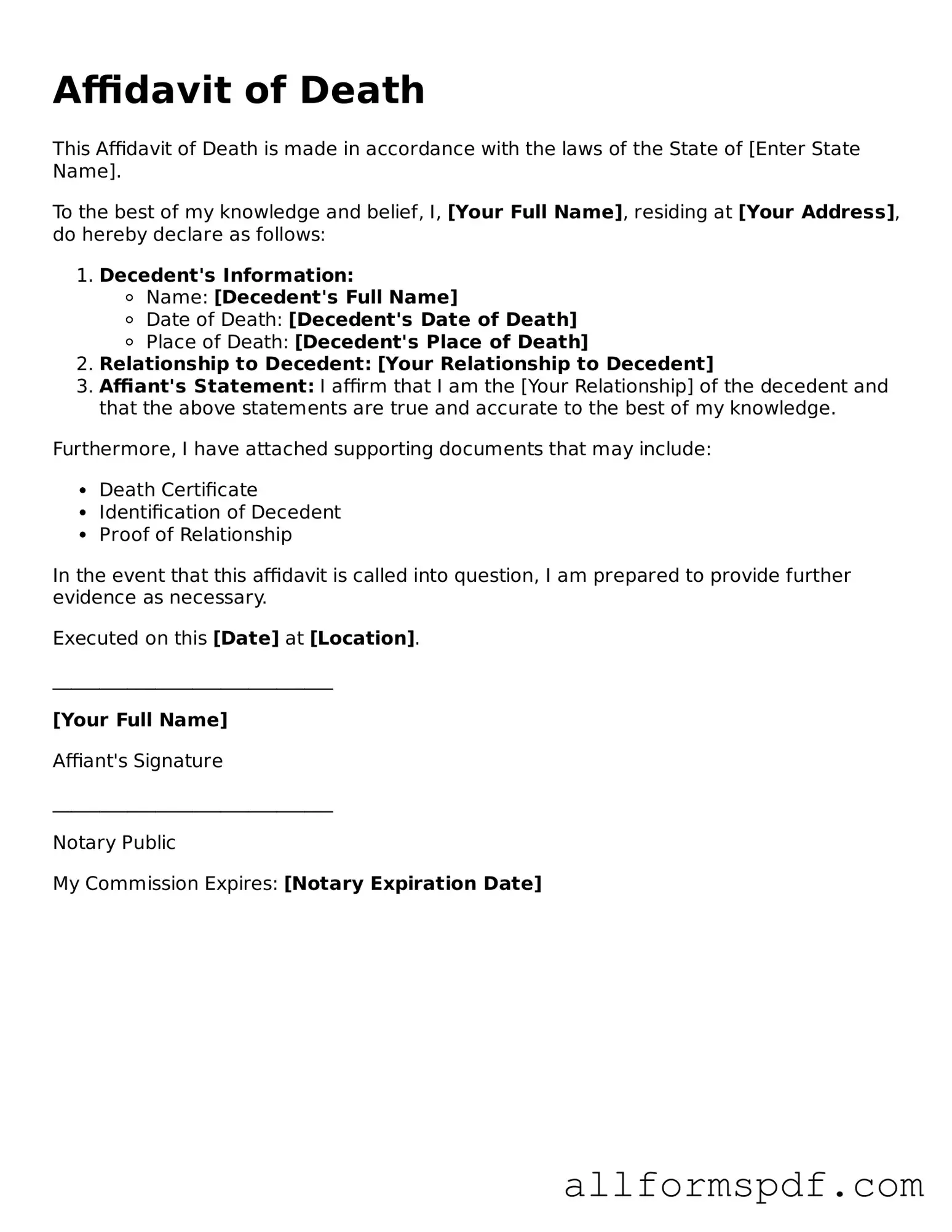Filling out an Affidavit of Death form is a crucial step in managing the affairs of a deceased individual. However, many people make common mistakes that can lead to delays or complications. One frequent error is failing to provide complete information. Each section of the form requires specific details about the deceased, such as their full name, date of birth, and date of death. Omitting any of this information can result in the form being rejected.
Another mistake involves incorrect signatures. The Affidavit must be signed by the person making the declaration, typically a close family member or executor of the estate. If the signature does not match the name printed on the form, it can raise questions about the validity of the document. Ensuring that the signature is clear and matches the printed name is essential.
Many individuals overlook the requirement for witnesses or notarization. Depending on the state, the Affidavit of Death may need to be signed in the presence of a witness or a notary public. Failing to include this step can lead to the form being deemed invalid, which can create additional hurdles in settling the deceased’s affairs.
Inaccurate dates can also pose a problem. People sometimes confuse the date of death with the date the form is completed. It’s vital to double-check that the date of death is recorded correctly, as this information is crucial for legal and administrative purposes.
Another common error is not including supporting documents. Some jurisdictions require a copy of the death certificate to accompany the Affidavit of Death. Neglecting to attach this important document can result in delays or the need to resubmit the form.
Inadequate explanations for the purpose of the affidavit can cause confusion. The form often requires the filer to explain why the affidavit is being submitted. Providing vague or unclear reasons can lead to questions from officials or institutions that need to process the document.
People sometimes fail to review the form thoroughly before submission. Mistakes can easily go unnoticed, especially if the form is filled out in a hurry. Taking the time to review all entries for accuracy can save time and prevent issues later on.
Another frequent oversight is not keeping copies of the completed form. After submitting the affidavit, it’s important to retain a copy for personal records. This can be helpful if any questions arise in the future regarding the deceased’s affairs.
Finally, some individuals underestimate the importance of seeking assistance when needed. If there is uncertainty about how to complete the form or what information is required, consulting with a legal professional can provide clarity. Taking this step can help ensure that the affidavit is filled out correctly and meets all necessary legal requirements.
